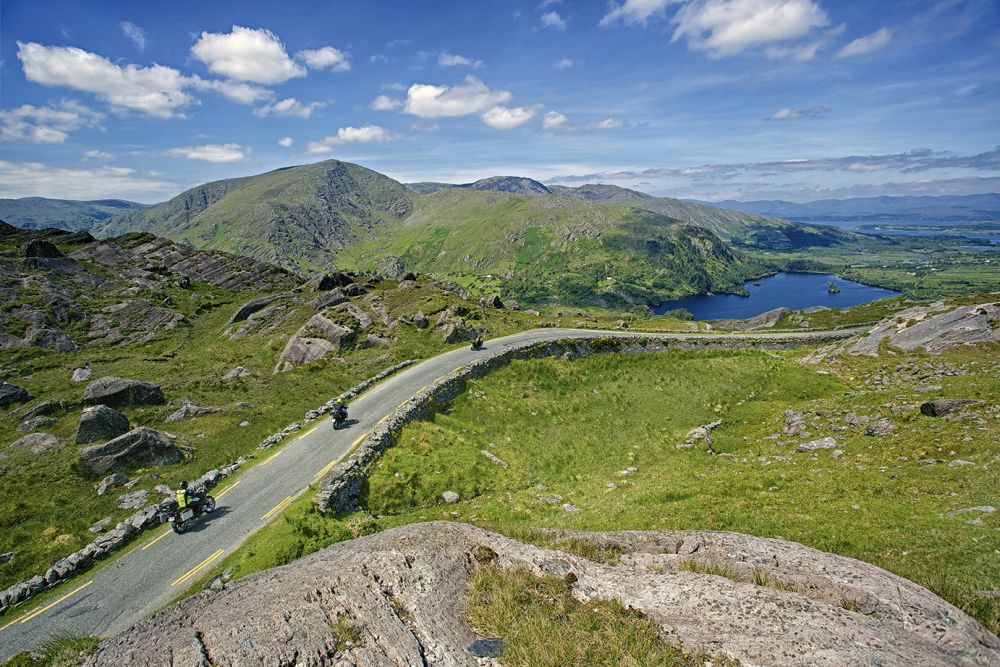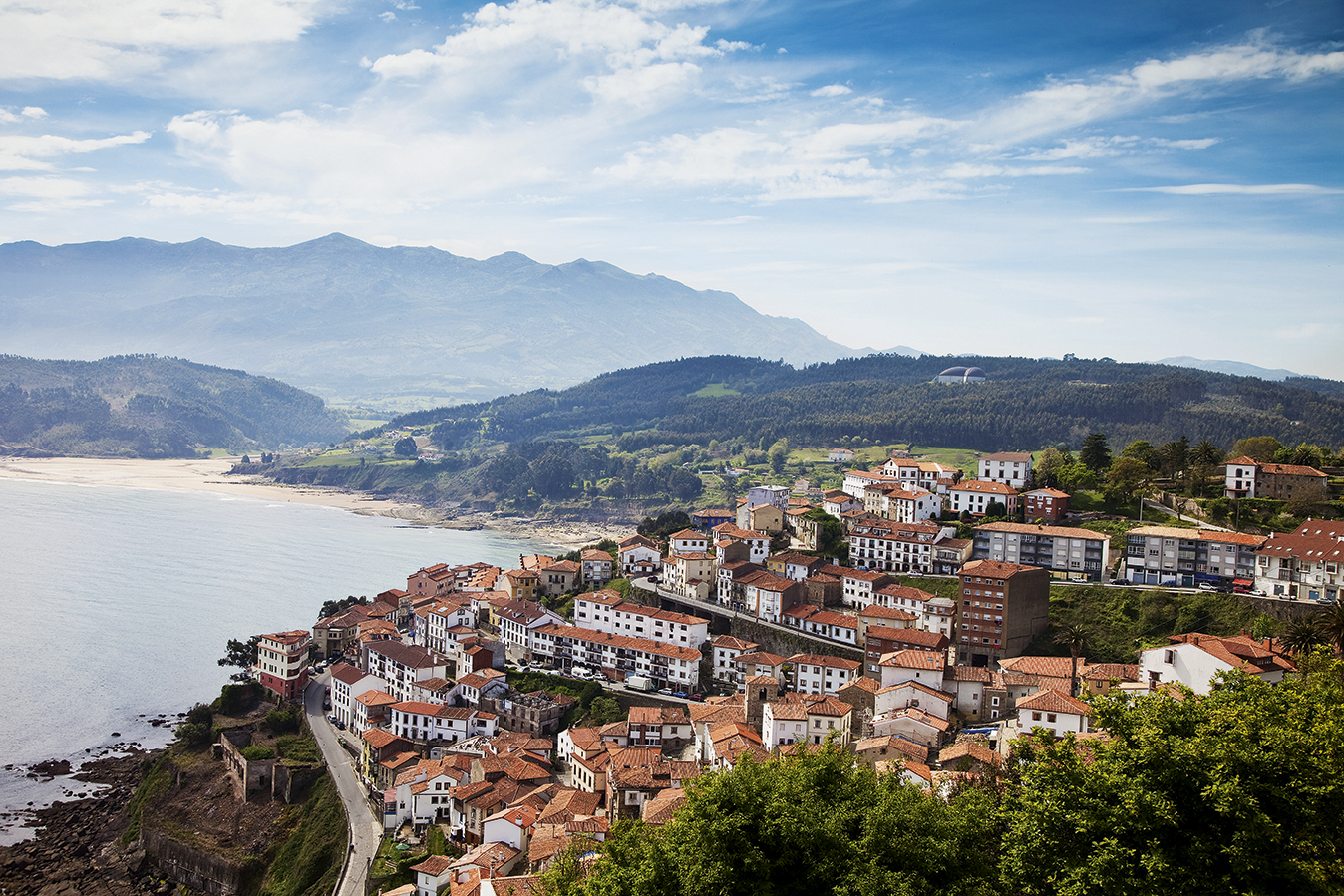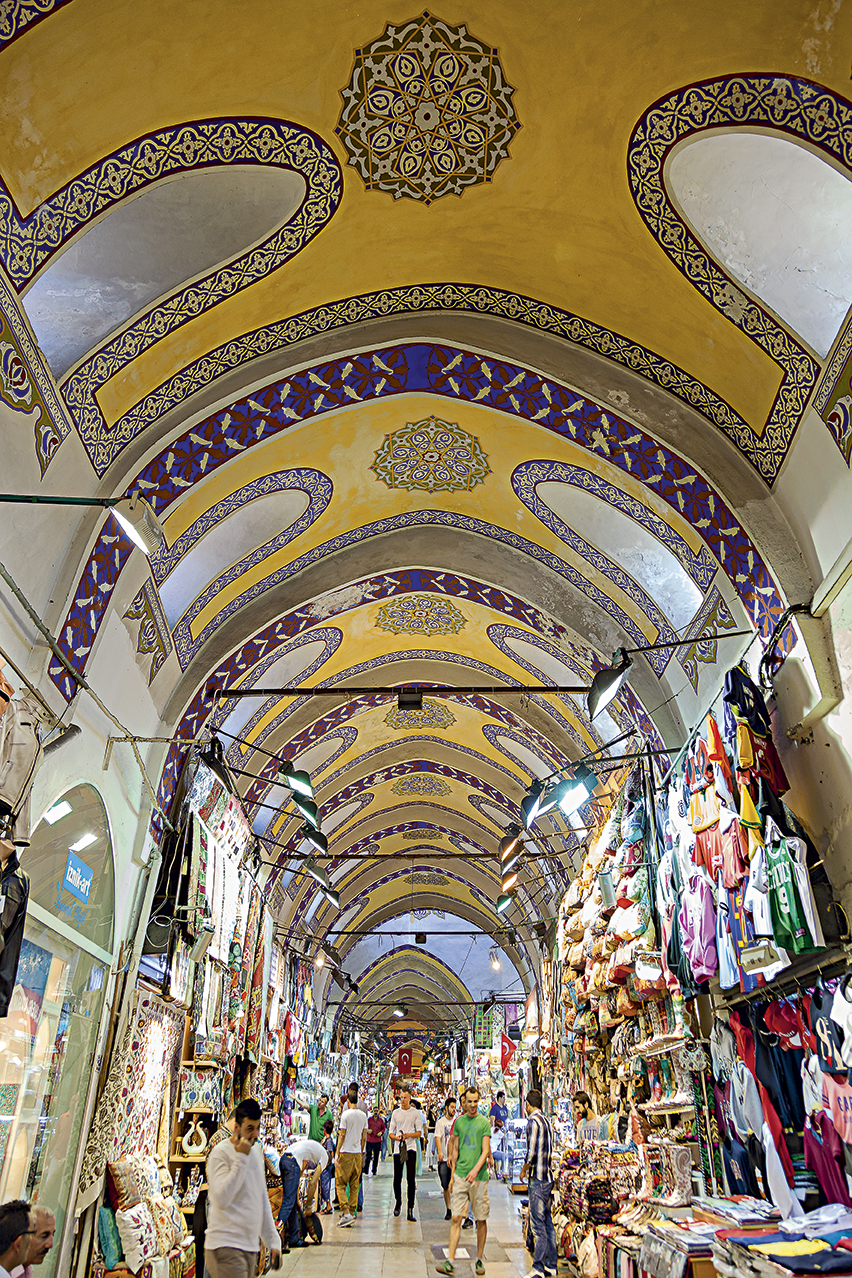Five spectacular roadtrips with food to match
Join Tom Hall on an expedition across the most spellbinding routes the world has to offer, with must-see, must-stay, and must-eat spots included on the map.

Join Tom Hall on an expedition across the most spellbinding routes the world has to offer, with must-see, must-stay, and must-eat spots included on the map.
A different take on the famed 'Garden Route' offering winelands, surf and safaris,
coupled with the best fish of the Atlantic and veggie-forward fine dining
Two weeks is well spent in South Africa’s Western Cape, ambling through the Winelands and the Garden Route. As green and easy on the eye as the name suggests, following the route – or detours off it – will lead to superb coast and forest scenery, terrific lunch stops and, of course, all the wine tasting you could wish for. The Garden Route officially runs from Mossel Bay to Storms River, but many travel a version from Cape Town as far as Port Elizabeth.
It’s not hard to get settled into the history, legendary Table Mountain views and incredible dining of Cape Town, especially if you stay in a chilled beachside base. Local seafood and game are both world-class. You can join the queues at the cool spots in the Atlantic suburbs like Camps Bay and Clifton, where Codfather sells great seafood. For dinner, try La Mouette at Sea Point, where chef Neill Anthony serves up modern European-influenced tasting menus paired with selections from a characterful local wine list: think beef fillet in sage brown butter and squid ink with a glass of Stellenbosch vineyard 2012 Morgenster Lourens River Valley Bordeaux Blend. After a dip at Boulder’s Beach, where you may have penguins for company, try the southern suburbs of Kalk Bay, where Olympia Café is renowned for brunch or lunch.
The Cape Winelands are not part of the traditional Garden Route but are an unmissable part of touring the region. Stellenbosch, Franschhoek and lower- profile alternatives like Robertson are a short drive from Cape Town but a world away from big-city bustle. Compared to Europe and North America, staying here, eating well and touring vineyards represents great value. You can take a break to enjoy minivan or horseback tours of wineries, many of which include a sumptuous lunch spread. La Petite Ferme’s jaw-dropping views of the Franschhoek Valley are the backdrop to dishes like slow-roasted knuckle of springbok, paired with La Petite Ferme’s own 2018 Merlot.
The fast route to Mossel Bay is the N2 motorway, but with more time on your hands it’s worth visiting the historic town of Hermanus – one of South Africa’s prime whale-watching bases – and detour to Cape Agulhas, the desolate southernmost point of Africa. In Hermanus, stop at Pear Tree Restaurant for local fish poke bowls and cracking berry-pavlova milkshakes.
Westwards of Mossel Bay the Outeniqua and Tsitsikamma Mountains form the backdrop on one side and the Indian Ocean on the other as the route passes historic towns, indigenous forest and idyllic seashore. The town of Wilderness wraps all these delights up in one package. The Garden Route is a fantastic place to get active, offering plentiful opportunities for superb hiking, mountain biking, kayaking, surfing and sailing. Knysna is an excellent base for everything from a yacht outing to one of the region’s celebrated multi-day hikes. It also has a great range of dining, from ocean-fresh fish and chips to quirkier options. VegTable dishes up four-course tasting veggie menus starring innovative dishes such as wild mushroom sliders.
While wildlife experiences are best found
elsewhere in South Africa, a visit to Addo Elephant
National Park offers a fix of wildlife's Big Five before
journey's end at Port Elizabeth.

Must-eat: Serendipity is acclaimed chef Lizelle
Stolze’s gourmet experience, close to Wilderness
National Park.
Must-stay: Four-star Hog Hollow Country Lodge is located just 18km east of Plettenberg Bay. The
elegant boutique hotel overlooks the Matjies River Gorge and the Tsitsikamma Mountains.
Doubles from £212.
Photo by Kyle Cut Media/Unsplash
Take in the best of the Basque region and Asturias coasts, with medieval towns, sPpectacular beaches and one of the world's most-talked-about cuisines
Pilgrims have for centuries sweated their way through northern Spain following the Camino de Santiago. Today, the region is as well the era-defining Museo Guggenheim Bilbao. Dining known for its fabulous surfing, España Verde (Green Spain) scenery and for boasting one of Europe’s most dynamic food scenes.
The easily accessible town of Pamplona is not the most obvious starting point from looking at a map. It’s known for its annual bull run, though best avoided while its big party crowds are in town. But like all of this region, there's always good food to be had, such as Michelin-starred Restaurante Rodero which dishes up artful blue-lobster lasagne and grilled pork shoulder, presa Ibérica, with a turnip salad. Pamplona is also the gateway to a swathe of medieval Basque towns, including Puente la Reina and Estella, where Bodegas Irache irache.com vineyard has a fountain of both water and its own wine, refilled daily to refresh and revive weary pilgrims.
Heading north, the Basque coast ups the stakes. It may prove difficult to leave San Sebastián, with its arc of golden sand, art nouveau architecture and famed cuisine. More than one pass is needed at bar-hopping to try out as many pintxos as you can. Find super-fresh seafood and seasonal house specials in Gandarias and at the Sirimiri Atari Academy where Asian-inspired pan bao jostles for attention with steak tartare. The Chutney Gastrobar Pedro Egaña Kalea 8 (Indian- inspired pintxos, anyone?) can mark the start of your snacking, but this is really follow-your-nose territory
The nearby seaside village of Lekeitio, an hour west along the coast, is a good place to catch your breath before moving on to Bilbao. Aim for Mesón Arropain Iñigo Artieta Etorbidea 5 for traditional Basque seafood dishes such as grilled hake. Reborn from its gritty port city roots, Bilbao now bursts with eye-catching wonders like Santiago Calatrava's Zubizuri crossing of the Nervion River and the era-defining Museo Guggenheim Bilbao. Dining optons can feel infinite, but Mina – run by chef Álvaro Garrido – is a safe bet, delivering an often-changing tasting menu that may feature spicy mussels, aubergine confit and smoked tuna.
Heading west into Cantabria, the landscape softens into rolling hills and a green coastline. Pause in Santander for a night or two and grab a surf or paddleboard lesson. Restaurant Cañadío is a wonderful spot for modern takes on Cantabrian classics like stuffed scallops. Move on to the contrasting day-trip towns of Santillana del Mar and Comillas – one a living museum of medieval buildings, the other heavily modernist influenced. Unspoilt sandy beaches are dotted along the coast – the Playas de Oyambra and Torimbia, over the border in Asturias, are two of the most stunning. Both the Picos de Europa National Park and less-visited valleys to the east reward those who have the time to detour.
This itinerary ends in Oviedo, the capital of
Asturias, with an old town that bustles by day and
parties by night. A glass or two from a buzzy cider
bar, sidrerÍa, followed by dinner will likely fire rather
than quench your appetite to explore the region.
Tierra Astur does great grilled lamb
and beef, served alongside fizzing cider shots,
cinematically poured from a great height. You could
always continue, like the pilgrims, on to Santiago or
even Cape Finisterre, where Europe runs out into the magnificent Atlantic Ocean.

Must-eat: Ribadesella's beachside grill Güeyu Mar is perfect for a lazy lunch.
Must-stay: Parador de Corias in Cangas del Narcea is
housed in a converted monastery in forested land.
Doubles from £180.
Photo by Carl Pendle
Stretching across five countries, from Central Europe through to Turkey in the east, this route delivers unsung heroes of continental culture and cuisine
Traverse some of Europe's most fascinating and lesser-visited countries all in one trip as you tackle a route that begins in Austria and sees you follow the famous Danube River out of the city of Vienna. Before that, though, ensure you get a table at the acclaimed Restaurant Konstantin Filippou and fuel up with a decadent two-Michelin-starred experience.
The mighty river winds south-east from here to two other capitals – Bratislava in Slovakia, a mere 97km away, and then on into Hungary, first to the handsome historic riverside town of Esztergom and then the imposing capital, Budapest. Here, thermal baths are the perfect place to soak away the aches from driving but more importantly they can soothe the aches from an evening at Borkonyha Winekitchen which not only has a Michelin star but is home to more than 200 wines, many sold by the glass and many of them Hungarian. The country was once one of Europe's biggest wine producers, but while those days are long gone, it has plenty of full-bodied reds to go with hearty dishes of duck liver, beetroot and cherry, and also aromatic whites refined enough to impressive any oenophile.
Back to the road, and while the river then rolls on into Serbia, via Novi Sad, Niš and Belgrade, our route heads deep into Romania. Driving east across the country leads to the baroque cities of Brașov and Sighișoara, nestling in the dramatic forested mountains of Transylvania, but also to a sense of entering a more ancient land of unique traditions and deep history. Many of the roads are spectacular, including the Transfăgărășan Pass over the mountains of the same name. Just watch out for potholes.
Spend a couple of nights in Bucharest to try some of the local favourites: stuffed cabbage, sarmala, hearty tripe soup, ciorbă de burtă, and also some more refined takes, the result of young Romanians returning home from European adventures. The farm-to-table Maize is just one good example. Explore the busy nightlife: as in Hungary, there are plenty of decent wines to be had in Romania, so be sure to try some of these.
South from here lies Bulgaria, another mountainous land of sweeping views but with a decidedly different set of influences. With time you can explore Sofia, the capital that’s home to the country’s best eateries. Try the authentic and fun Manastirska Magernitsa which dishes up traditional rich game stews served with wine from southern Bulgarian wineries like Orbelus and Medi Valley. Then head to Rila Monastery, where the country’s Orthodox faith is expressed in colourfully painted frescoes. To head in a more direct line south, pause in the fortress of Veliko Tarnovo and the Unesco-listed Plovdiv Old Town.
Not enough visitors break the journey to admire the grand mosques of Edirne en route across Thrace, but with the draw of Istanbul in sight, this is perhaps understandable. The former Byzantine and Ottoman capital remains one of the world’s great cities and has been reborn in the past 20 years as a world leader for culture, food and architecture. A week would start to do the city justice and allow wanderings well beyond the historic core of Sultanahmet, but even with a few days, don’t miss rooftop dining across the Golden Horn in Beyoğlu, including at Mikla restaurant atop the Marmara Pera hotel.
The high-class Mediterranean fusion matches the
fantastic scenery, as Mehmet Gürs cooks up octopus
with pickled sour apple, followed by beef rib with
artichoke. The up-and-coming corners of Kadıköy
are on the Asian side of the Bosphorus. Grab a table
at the Moda Aile Çay Bahçesi Caferağa Mahallesi
– a tea garden looking out onto the Sea of Marmara
– and happily while away an afternoon.

Must-eat: For a top-end contemporary take on Vienna’s dining scene, try Steirereck restaurant, in the middle of the Wiener Stadtpark, where artfully presented dishes include the likes of sturgeon with kiwi, onion and curd, and veal tripe with chilli and sweet potato biscuits.
Must-stay Bed down at the House Hotel Karaköy, in
the heart of the fashionable Pera district, which has
well-designed doubles and is close to galleries
including Istanbul Modern.
Photo by Sarah Coghill
Viking history, kitesurfing, Baltic islands, the Lego House, breathtaking Nordic scenery and a starting point in one of the most food-forward culinary capitals of the world
From the sophisticated palate of the capital to the tapering spit of sand marking one of Europe’s geographical full stops, a journey across Denmark is a gentle yet immensely rewarding adventure. The country’s take on the New Nordic food scene attracts gourmands but Denmark is also one of Europe’s most underrated historical destinations. This is one road trip that doesn’t need a car, as the country is easy to discover by train, with plenty of bus options and fabulous bike routes (plus easy-to-hire cycles) in evidence in all major centres.
Copenhagen will, of course, demand your culinary attention, whether you’re trying the excellent street food and local brews, hanging out with the cool kids in revamped dive bars in hip Vesterbro or chasing a much-coveted reservation at Mes or Alchemist restaurants. Beyond this, the city’s many museums are among Denmark’s best, while unusual urban attractions like the CopenHill ski slope, located on top of a power station, and the emerging new neighbourhood of Ørestad underline the city’s boldly innovative streak.
Before you start heading west, consider doubling back, especially if you are here in summer. Plotting a journey across Denmark means turning your back on Bornholm, one of its finest summer retreats. A detour by ferry, fast catamaran or short flight is well worth it if you have time. This peaceful island in the middle of the Baltic Sea is beloved by Danes for its sunny climate, unspoilt beaches and good eating at convivial beachside spots like Kadeau in Aakirkeby and Lassens at the traditional seaside Stammershalle Badehotel.
Jutland – the part of Denmark popping out of northern Germany – forms the rest of this itinerary. Consider stopping to admire Viking and medieval history in Ribe, checking out the extraordinary amount of fun on offer at Legoland and the nearby Lego House in Billund and try a little wind- or kitesurfing on the breezy west coast of the country. Denmark’s unsung hero, second city Aarhus, has superb modern art at ARoS and the Moesgaard Museum, where the Grauballe Man, a Dane preserved in mud almost 2,500 years ago, is waiting to be discovered. St Paul’s Apothek offers an ever-changing menu of modern Scandinavian dishes paired with expertly executed cocktails.
Take some time to discover the regenerated waterfront of fun, post-industrial Aalborg – try the fresh-baked bread and macaroons at Penny Lane – before finishing in Skagen, at Denmark’s northern tip. The sense of peace and light found in this town – a kind of forerunner of the hygge cosiness vibe that can be found across the country – has long attracted artists who have left a legacy of beautiful work interpreting scenery and life along the coast. The food is worth the trip alone: fresh catch of the day served up boatside day and night in the town’s quayside and Ruth’s Gourmet where chef Jack Cramer delivers a locally sourced Nordic tasting menu that makes great use of the local natural larder: think turbot with lobster and rabbit.

Must-eat: Delicious Danish smørrebrød (open-top)
sandwiches? Local beer and organic wine by the glass?
A Michelin star? You bet. Selma in Copenhagen is
unmissable for dishes such as beetroot-rosehip herring
with pearl onion, crème fraÎche and buckwheat, and
fried scallops with lemon cream.
Must-stay: Offering boutique style a five-minute walk
from Tivoli Gardens, the world's second-oldest
amusement park, dating back to 1843, the Andersen
Hotel is a good Copenhagen base. Socialise with other
guests in the lobby lounge, with 'wine hour' running
daily from 5-6pm. Doubles from £102.
Photo by Kornel Mahl/Unplash
Discover some of Western Europe's greatest surf-and-turf treasures while exploring the best of what the Emerald Isle has to offer as you travel the coast-hugging Wild Atlantic Way
This incredible 2,414km route along the south- west and western edges of Ireland weaves from Cork to Donegal via some of Europe’s finest coastal scenery. Along the Wild Atlantic Way are cliffs towering above the foaming ocean, perfect strands of sandy beaches and an endless succession of picture- perfect coastal villages. This is a route to take on with an appetite: green fields and fresh Atlantic waters give up a feast of seafood and organic beef, cheese and vegetables, best washed down with a creamy Guinness or a brew from Ireland’s fast-developing craft beer scene. Most choose to tackle the route bottom to top, to keep on the ocean side of the road when driving. The roads can be slow going in places, so rather than rushing it in one go, break it into a few sections.
The most popular part of the Wild Atlantic Way starts in Cork city, home to the wrought-iron riot of fine food that is the English Market and its Farmgate Café whose local produce-inspired dishes are legendary. Linger over a lunch of duck rillettes with Arbutus sourdough or daily specials of meat and fish choices, fresh from the market.
From here, the route follows the coastlines of the south-western counties of Cork and Kerry. Dramatic roads thread their way along peninsulas, with views of offshore islands including the Star Wars-like Skellig Michael. The region’s most famous drives – the rings of Kerry, Dingle and Beara – may throng with crowds in the summer but there are ample detours, bike rides and hikes suited to all levels – wildatlanticway.com is the best place to start for routes – offering enough solitude in which to take in the views in peace. In the evenings, feast on crab and prawns landed just metres from where you’re staying. QCs Seafood Restaurant qc.ie in Cahersiveen, Kerry serves up statement seafood landed fresh that day by the family-run fleet.
Coming next is County Clare, and arguably the section of the Wild Atlantic Way to savour most, with a parade of world-famous sights along a relatively compact stretch. Here you’ll find the Burren’s unique lunar landscape and Neolithic tombs, the towering Cliffs of Moher and good surfing around Lahinch. It’s also a great place to indulge your sweet tooth, on an artisan factory tour at Wilde Irish Chocolates on the shores of Lough Derg.
The city of Galway, the next pit stop, has a justified reputation for pub ceilidhs, live music and fabulous dining. Big-name chefs like JP McMahon of Aniar have made Galway their base, and while Galway Bay oysters grab the headlines, local vegetables, dairy, meat and foraged delicacies are all put to revolutionary use here, too. At Enda McEvoy's Loam try the local charcuterie, which includes the likes of Connemara air-dried lamb and house-cured lardo. On the tasting menu, dishes may include cauliflower, verbena and bone marrow, monkfish, broccoli and little gem, and lamb, turnip and mint. The cheese selection is also well worth exploring.
The crowds thin out the further north you go, but in Mayo, Sligo and Donegal the sense of space and discovery is, for many, the best saved for last. The landscapes are more rugged, beaches more wind- swept and the immersion is total – seaweed here can be bathed in, not just smelt and eaten. An Port Mór in Westport, Mayo is one of several stand-out eating locations – Frankie Mallon’s Clew Bay crab claws in garlic butter draw a long queue.
Wherever you are, don’t underestimate how many
detours there are all along the way, from seafront
farmers' markets to ancient monuments.

Must-eat: Galway Food Tours offers daytime and
evening culinary walks and whisky tours. Sample
everything from Galway Bay sushi to cheeses and
fresh-fruit tarts. From £59pp.
Must-stay: Coopershill, a luxury stately house retreat in
Sligo, makes a superb start or finish point on the route.
Expect open fires, incredible cooking and large, bright
bedrooms. Doubles from £213.
Photo by Fáilte Ireland
Subscribe and view full print editions online... Subscribe